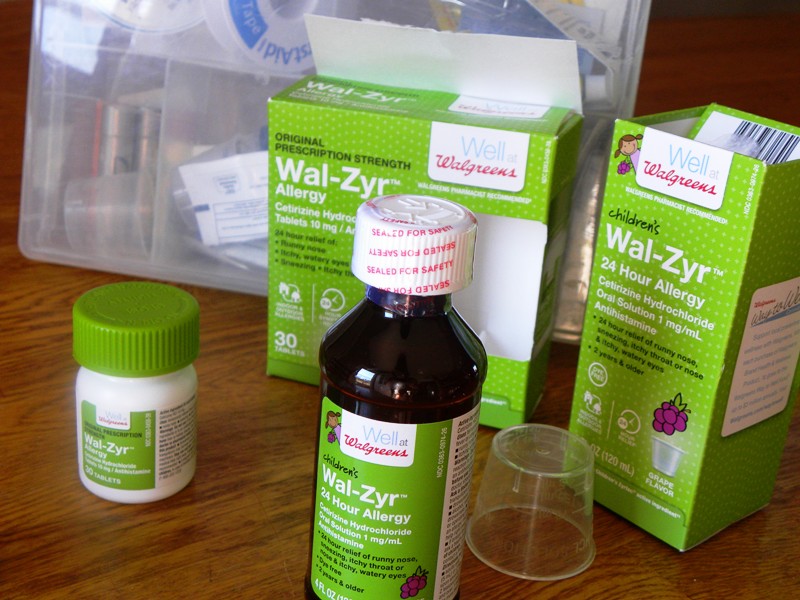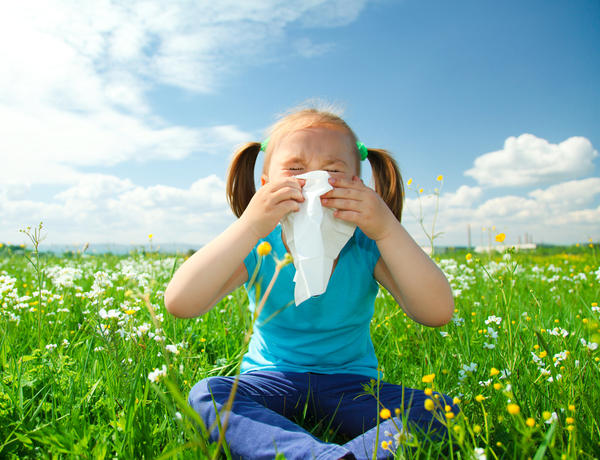 New Health Guide
New Health Guide
There are various reactions of the body to an allergen. When a person is allergic to a substance, the immune system reacts by causing allergic reactions like itchy or watery eyes, rashes or sneezing. Such people can have a hypersensitive immune system and substances which seem harmless to other can trigger reactions in them. Pollen grains are one of the most common environmental allergens.
You can notice allergic reactions in your kids if they are rubbing their eyes more frequently, have hives or rashes on their body or if they are having sneezing fits without having a cold.
 Allergies are frequently seen in kids and different types of medications are available to treat them as well. OTC medications should be given after taking the advice from pediatricians. Some medications can be prescribed by the doctor as well. These medicines are effective and easy to use.
Allergies are frequently seen in kids and different types of medications are available to treat them as well. OTC medications should be given after taking the advice from pediatricians. Some medications can be prescribed by the doctor as well. These medicines are effective and easy to use.
This group of medicines has been used to treat allergies for the longest period of time. They suppress the histamines released by the body in response to an allergen. Histamines are responsible for causing itchiness, redness, swelling or increased mucus production. Anti-histamines usually are known to cause drowsiness and hence should be given to the kids in the evening or near bedtime. However, the new varieties which do not cause drowsiness are available now. They are available in the form of syrups, chewable tablets and nasal sprays; however, you may have to consult your healthcare provider before giving them to your kids.
This group contains steroids or cortisones which are used widely and are very effective. They are available in the form of creams, inhalers, nasal sprays, tablets and liquids. Steroid creams are safe and effective if used properly, and they have not been known to cause any ill effects in the long run. Nasal sprays are very effective and used once a day. They are effective when used regularly on daily basis rather than when needed. Sometimes pills are used to bring the allergy under control. High doses, especially of pills and liquids, should be avoided as they bring risks of weight gain, high blood pressure and cataract, and slow down growth.
Allergy immunotherapy does not work in every type of allergy. In this treatment form, small doses of the allergen are given to the person, so that the reaction to it is reduced and over a period of time the allergy disappears. It takes a long time and requires a lot of patience and commitment. The doses are gradually increased and continued for 3-5 years. The effect of the injections reaches maximum by 6 to 12 months.
Leukotriene blockers include Montelukast, which can be given to kids as young as 6 months old to treat allergic rhinitis. It was developed around 10 years ago; however, studies have shown that it is not as effective as anti-histamines in treating allergies. It is however, better in treating nasal congestion. When taken along with anti-histamines, it can be effective in treating allergies. It works well for children who have mild asthma and allergies and should be taken daily for best effect. The side effect includes mild headache, abdominal pain and fatigue.
The most effective treatment method for nasal allergies and non-allergic rhinitis is the use of topical nasal steroids. They are available with prescription and many varieties are available in the market without much difference in the efficacy. They can be used in children as young as two years old. They control sneezing, nasal congestion, itchy nose and nasal drip. They need to be used daily and side effects include mild nasal irritation and nose bleeding.
|
Azelastine |
Azelastine is used in children of five years old and above. Its action is similar to nasal steroids and routine use is most effective. Mild and local nasal irritation and sleepiness are some of its side effects. |
|
Nasal ipratropium |
Nasal ipratropium helps in drying up the nasal secretions and treating runny nose. However, it does not help in treating nasal itching and nasal congestion. Side effects of these nasal sprays include nasal irritation and nasal dryness. |
OTC Nasal spray, NasalCrom prevents release of histamine and provides relief for stuffy or runny nose. Drugs are taken along with inhaler or nebulizer for asthma and decongestants like oxymetazoline and phenylephrine. These decongestants can cause stimulation in the kids and make them hyper, increase anxiety and heart rate and may even cause difficulty in sleeping.
To avoid such side effects, it should not be used daily to control nasal congestion. Product containing Cromolyn can be used for children as young as two years and should be used as preventive measure before exposure to allergens. They do not work when given as as-needed basis.

It is best to keep children away from allergens. Avoiding exposure is the best way to prevent allergies. Seasonal allergies can be caused due to presence of pollen in the air. Depending on the season, kids can be kept indoors during early morning, evening or in the fall when the level of pollens are highest in the environment. It is beneficial to keep the windows closed or use air conditioning during seasons when pollen count is high.
Watch a video to learn more about how to deal with allergies in kids from: